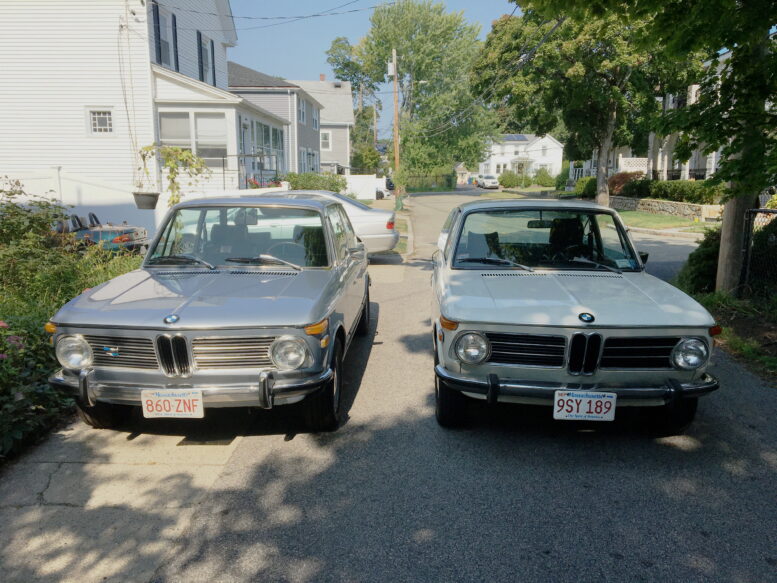With the “mitzvah” 2002tii finally sold on Bring a Trailer, I didn’t think that the car would be here at the house much longer. This thought turned out to be optimistic, since as of this writing, the buyer, whose email address is at Beverly Hills Porsche, still hasn’t paid Chris (the owner). She’s on a road trip in Nova Scotia to scatter her husband Jim’s ashes. (He was the original owner of the car.)
Our deal was that I’d do nearly everything—prepare the Baby for sale, photograph it, list it on BaT, coordinate with the buyer on shipping—but she needed to manage the money transfer herself, so there was no need for it to pass through my hands. Before she left, I talked her through what needed to be done, but despite my texting both her and the buyer, the car still hasn’t been paid for, which means that the clock hasn’t even begun ticking on shipping arrangements. So for now, the car has been moved out of my garage and into my driveway.
I may need to drive it back up to her house in Newburyport and put it back in the garage where it sat protected for decades, but when I took delivery of the car in June, she was pretty emotional seeing it go, and I really hate to put her through that again.
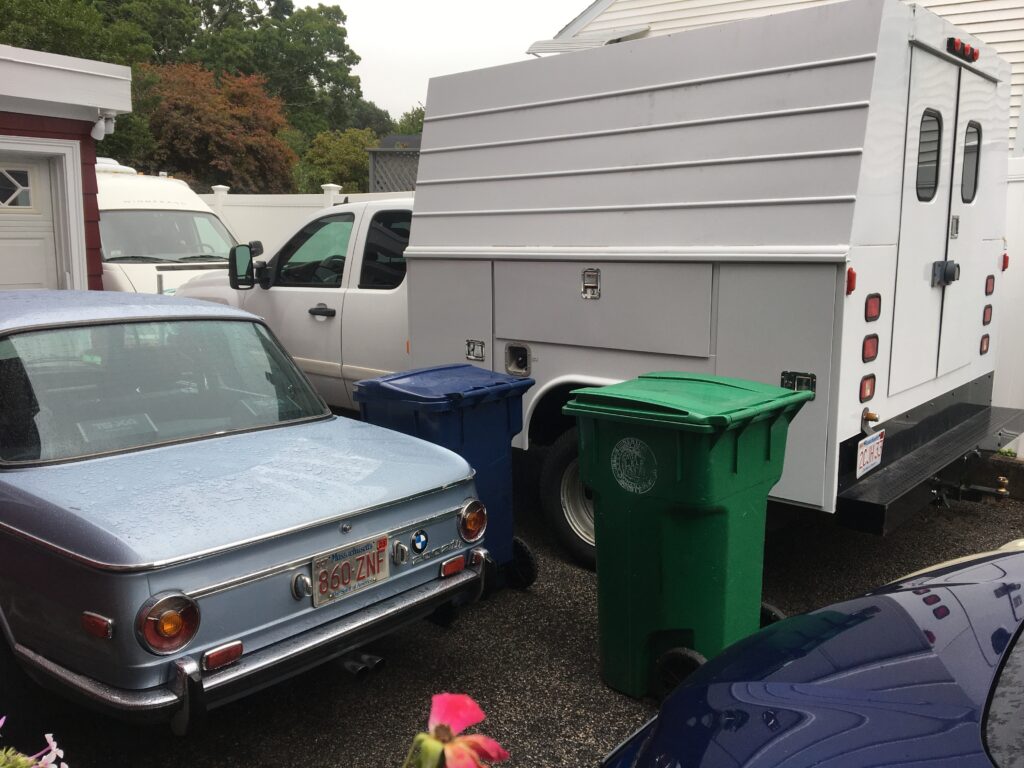
Who puts Baby in a corner? I guess I do.
Part of the irony of the Baby being here since June is that it’s been the only 2002 that’s been here all summer. None of my three 2002s—Hampton the 49,000-mile survivor, Louie the Ran When Parked tii that I drove to MidAmerica 02Fest, and Bertha, my ratty-but-tricked-out small-bumpered ’75—have been here since May.
So the week before last, knowing that the auction’s closing was near, I drove the M coupe out to the Monson warehouse where I rent space for five cars (the three 2002s, the Bavaria, and the Euro 635CSi), and swapped it for Hampton. In addition to wanting some face and seat time with the pretty little Chamonix survivor, now that autumn is here, grabbing the 2002 without air conditioning made sense.
Three things went wrong. First, the guy who owns the Monson warehouse trusts me enough that he gave me the combination to the gate and the building, so I now can come and go as I please, but I didn’t think of how my recent back injury would affect retrieving a car. I’d forgotten that the warehouse gate is one of those long slide-on-rollers chain link jobs, and it’s not electric, so you have to slide it yourself. The big roll-up warehouse door isn’t electric, either. Finally, other cars sometimes block mine. They’re left with the keys in them, and it’s not that hard to roll them out of the way, but by the time I got Hampton out and had the place locked back up, I felt like I’d been beaten with a bat.
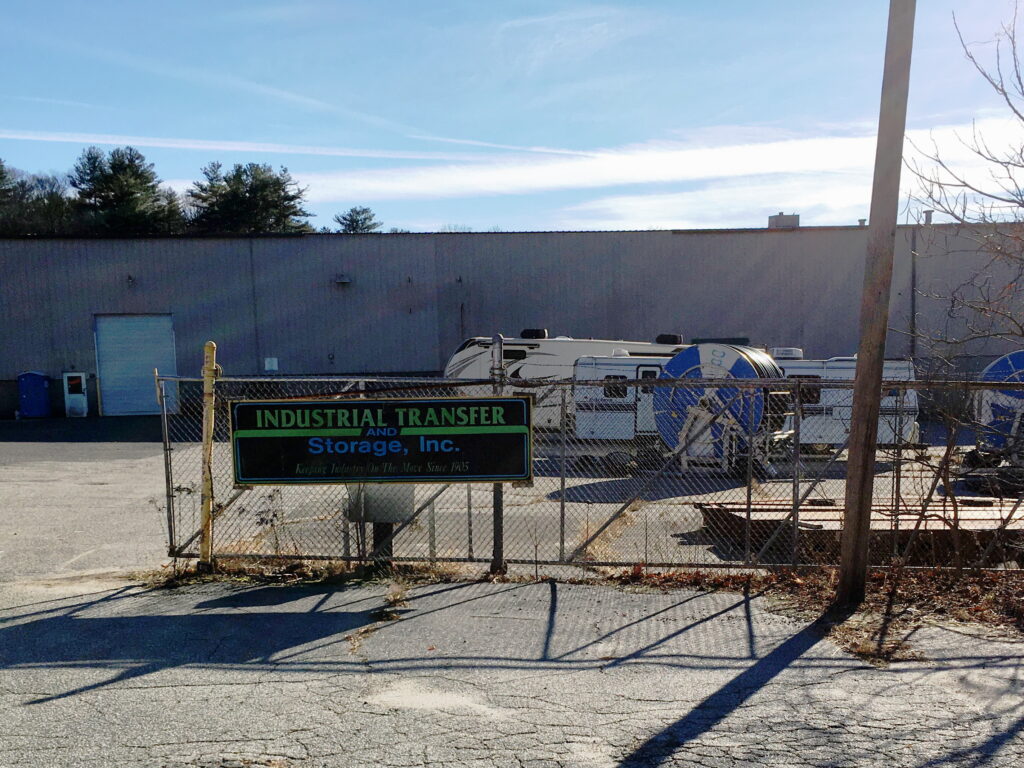
I didn’t expect this to be the vector for pain that it was.
Second, Hampton has had a long-standing problem: It can be maddeningly difficult to start. Whenever I think I’ve solved this problem, the car makes its “You haven’t solved me, sucker!” face.
Any carbureted car that’s been sitting for months has the problem of the mechanical fuel pump needing to fill the empty float bowl, and I wrote previously about how the initial location of Hampton’s fuel filter in front of the fuel pump made it absolutely refuse to pump fuel. But even when the float bowl is full, the car will sometimes behave as if it doesn’t have spark. (It does. I checked.) All of this was part of the reason I wanted to bring it home; I wanted to solve this once and for all.
Third, when I got off the highway and began driving on Newton’s battered roads, a banging arose from the right front of the car that was so pronounced that I thought the car might have a bad ball joint. I drove the last mile very slowly, parked the car in front of the house, rearranged other cars in the driveway and garage, and put Hampton directly on the lift.
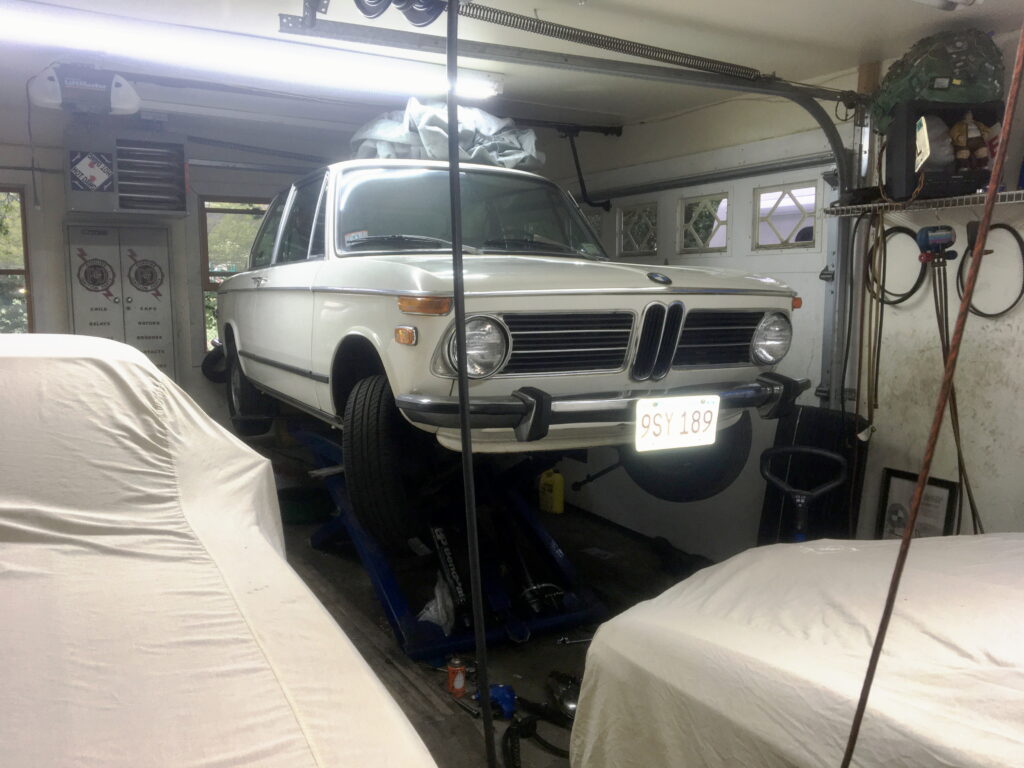
The patient lies etherized on the table.
About fifteen minutes and a bunch of component-shoving later, I identified the source of the noise. It wasn’t a ball joint, but was instead the tapered rod on the center tie rod (also called the center link or the drag link) that connects to the idler arm, which is the thing on the right side of the engine that mirrors the motion of the steering box on the left.

The center tie rod in all its greasy glory: The connections to the tie rods are just inboard of the ends. At the very ends are the connections to the steering-box arm (left) and the idler arm (right).
For me, the biggest issue with front-end work like this on vintage cars is the slippery slope. Do you replace just the worn-out component that’s making noise, or every component it touches, or every single front-end component? Most of the time I’m resolutely pragmatic in these matters, and what I do depends on what the goal is.
Here, the goal was simply to be able to drive the car.
If I encountered anything else that was obviously bad, I’d replace it, but I was not going to slide down the slope into rebuilding the entire front end. As it happened, I didn’t find any other bad components. The other tie rods and the ball joints were fine, as was the idler-arm bushing. The rubber bushings in the lower control arms and the radius rods had clearly seen better days, but nothing was actually loose.
Okay, one center tie rod coming out. After working on 2002s for 40 years, I’ve accumulated the requisite set of pullers to remove front-end components. There’s the screw-down-from-the-top-style puller and the lever-style puller. The screw-down-from-the-top puller is preferred, as long as its open jaws have something to rest on and there’s clearance to use it. I used it to pull (well, push) both of the tapered tie rod ends out of their holes.
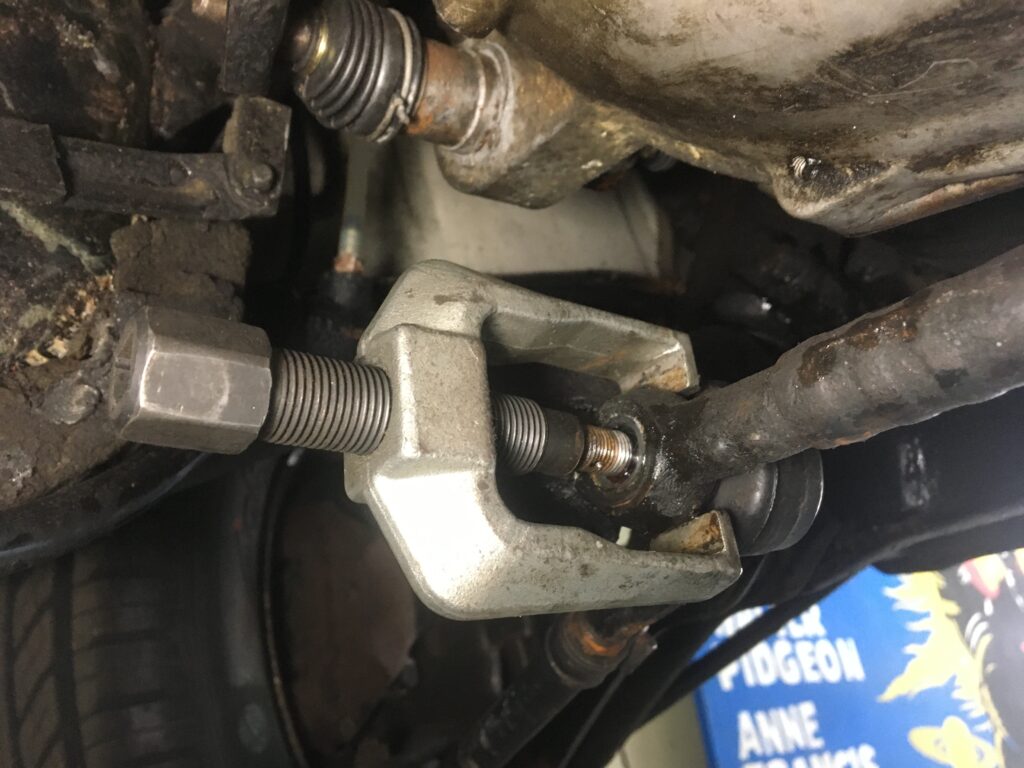
The screw-down-from-the-top puller does its job.
The lever-style puller is more of a pain, but it had to be, um, pressed into service to push out the tapered rods that went into the steering and idler arms, since the from-the-top puller didn’t have enough surface for the jaws to set on and pull against.

The lever-style puller.
It wasn’t too bad. The worst part of it was digging the ancient cotter pins out of the castellated nuts, and the loud BANG! that the tapered rods make when they’re under tension from the puller, you tap the housing with a hammer, and they suddenly let go.
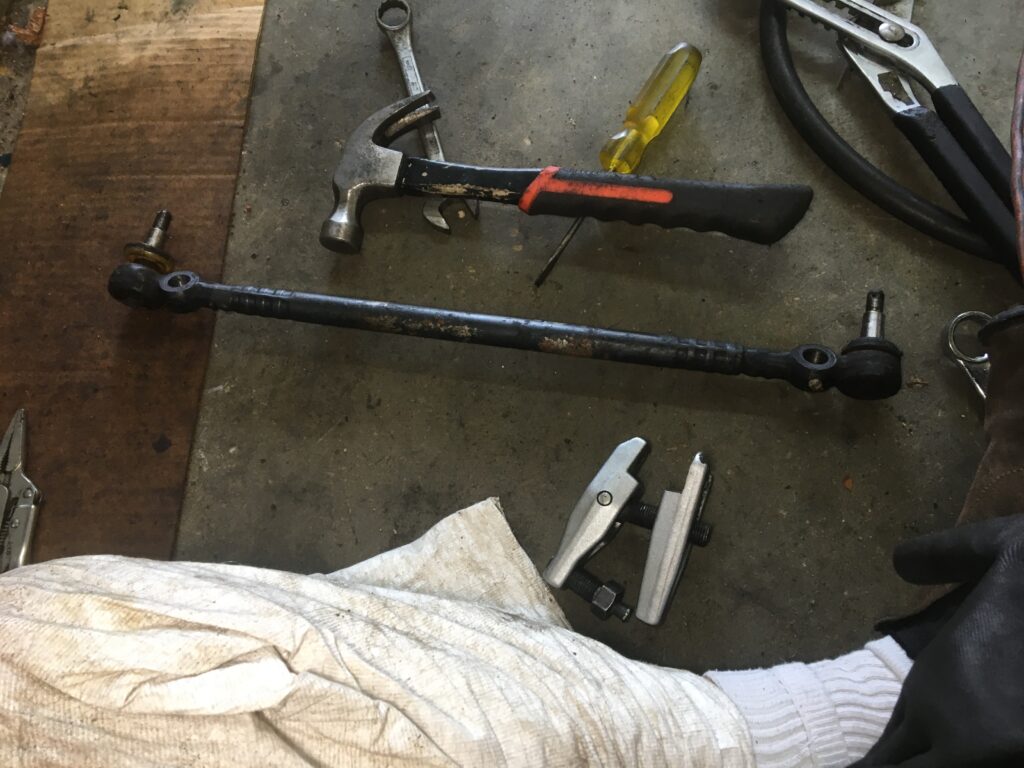
I win.
With the center tie rod out, and with that mercifully being the only needed part, I needed to procure a new one.
I am often asked where I buy parts for the 2002s and my other vintage cars. There are the 2002 specialists like BluntTech, and the general German-car sites like FCP Euro. But folks are often surprised when I name RockAuto, Amazon, and eBay. Really, it depends what the part is, whether I’m looking for new or used, and if new, how close I want to try to come to OE (original equipment) or OEM (original equipment manufacturer).
The general sequence goes like this. First I’ll look up the part number on realOEM, then search for it on these sites and see what’s available. But one trick is to search eBay for all of the part numbers that realOEM lists for the part, not just the most up-to-date number. For example, the part number for the center tie rod is listed in realOEM as 32219057204; under that number, FCP Euro lists the OE BMW part for $292 and a Moog substitute for $108. However, the original part number for the center link was 32211107076, which, according to realOEM, was superseded by 3221103077.
It’s apparently a little-used part number, but a search on eBay for 3221103077 revealed a fellow selling new-old-stock Febi center tie rods under that part number for $55 shipped. He clicks! He scores!
The new part arrived in a few days. The worst part about installing it was the tight clearance of the torque wrench on the castellated nuts—which is to say that the installation was easy.

Done.
Before I drove the repaired car, I treated myself to something. While I love the look of intact vintage interiors in 2002s, E3s, and E9s, those big, flat, pleated German horsehair seats are torture devices for a guy with back issues. Plus, Hampton’s seats are nearly perfect, with no tears, cuts, or splits, and while the car has grown on me, I do have one eye on resale, and I’d hate to sit in the seat and have it split.
I have a pair of Recaro-like Konig seats that came in my dear departed ’72 tii, Kugel. They were a bit zingier than I wanted for a long-term relationship, so I replaced them with a set of E21 Recaros that I happened into for a good price. The Konigs sat in my basement until I bought Louie, the ’72 tii that I still own. Louie’s driver’s seat was original and looked great, but it was old and crunchy, and as soon as I sat in it, it split. Plus, with all the driving I did and still do in the car, I needed more back support, so several years ago I installed one of the Konigs in Louie.
I just installed the other one in Hampton. As I said, I’m a pragmatic person.
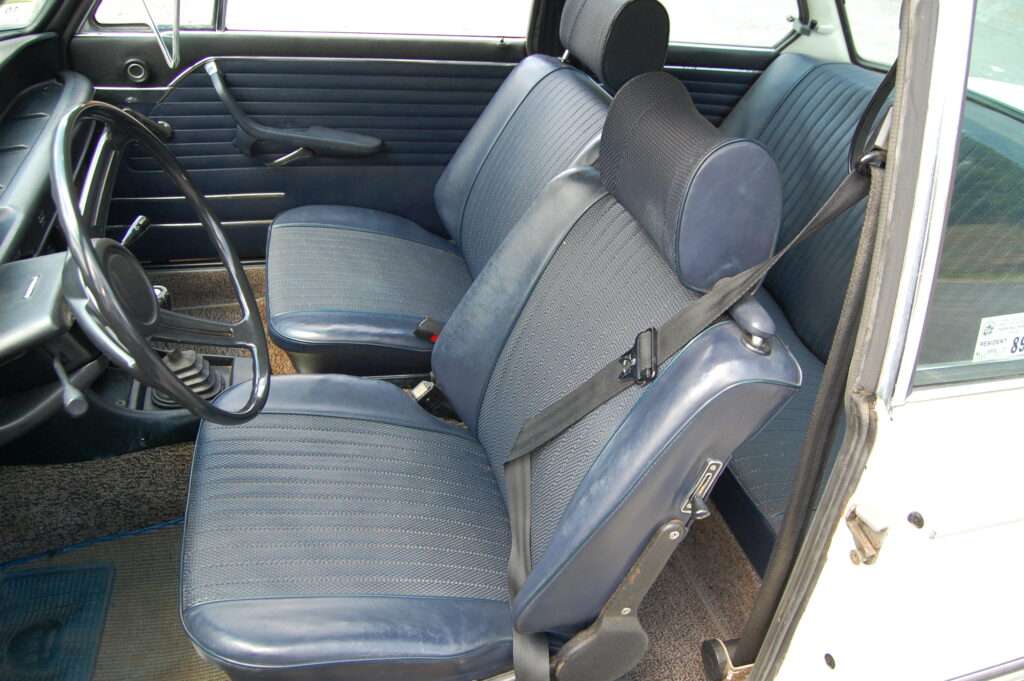
This…
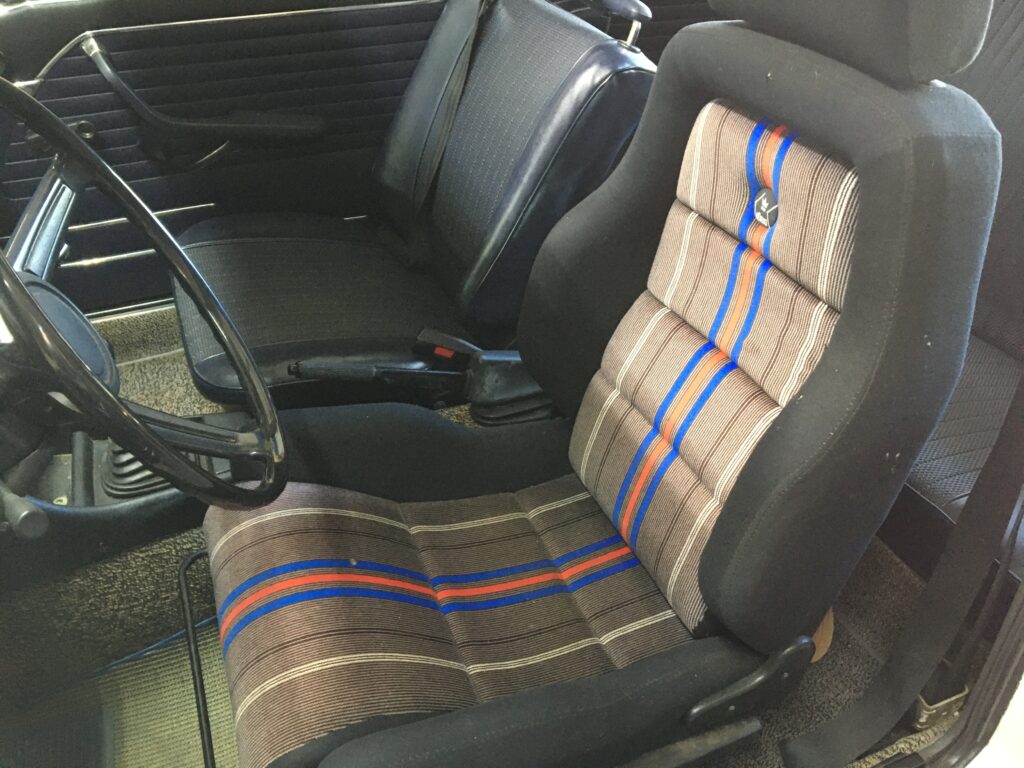
…became this.
That just left the matter of trouble-shooting the hard starting and some other carburetion issues. We’ll get to that next week.
But it’s great having the car back at the house. I didn’t realize how much I’d missed working on and driving a 2002 that I actually own.—Rob Siegel
Rob’s new book, The Best of The Hack Mechanic, is available here on Amazon, as are his seven other books. Signed copies can be ordered directly from Rob here.

